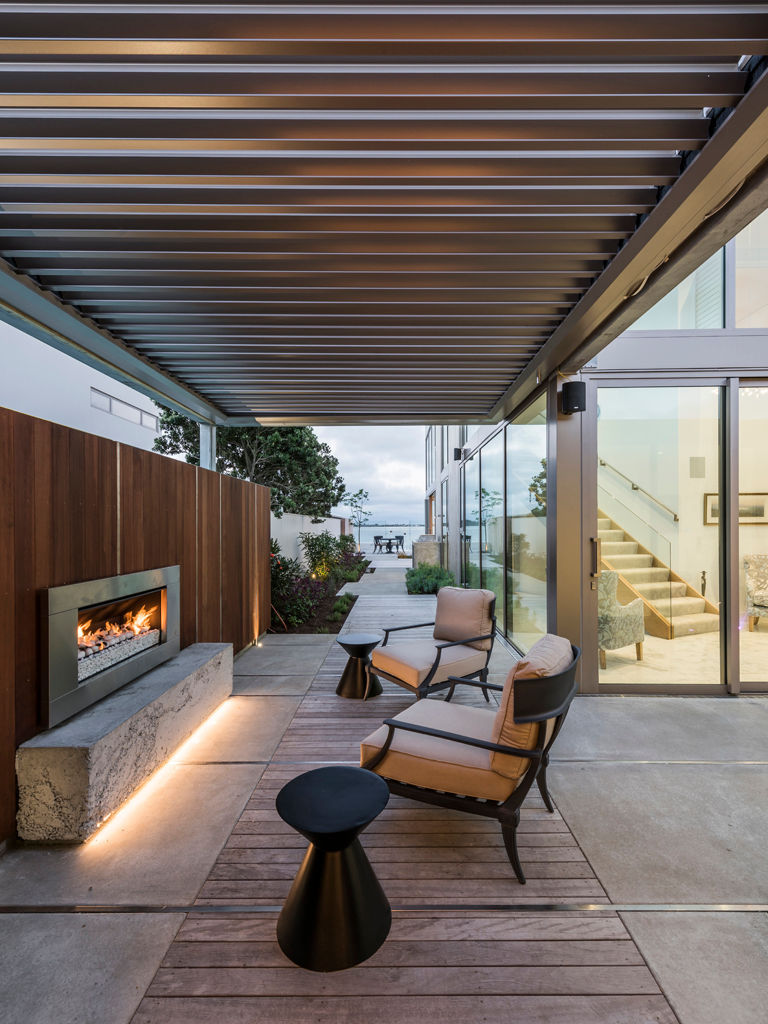Fireplace Design Considerations for Winter
- ashley29340
- Apr 22, 2024
- 3 min read
Traditionally a fireplace was used to heat up your home as a basic necessity for warmth, cooking and cleaning. Today it is used for so much more!

A fireplace provides a central meeting place, it adds to the aesthetic of your home, it’s a mantle for focal artwork, and provides ambience for your space. There are many different types of fireplaces to choose from. These encompass a huge range of styles, performances, and methods of burning. See below for a brief guide into options for your next fireplace feature piece.
Wood burning fireplaces – Wood burning fireplaces give a beautiful sense of warmth, beauty and nostalgia to your indoor, or outdoor space. These can be open aired or a closed firebox, available in many shapes and sizes. It can blend into your existing aesthetic or stand out as a feature. With a wood fire you will need a chimney constructed from a non-combustible material like brick, concrete or stone. Your local authority may require your fireplace to be an Ultra-Low emission wood burner (ULEB) which are the next generation in environmentally friendly heating solutions.
Gas burning fireplaces – Today, there are a lot more options for efficient gas burning fireplaces with little maintenance and sleek styles being their drawcard. Their convenience and easy operation for the user makes them a popular choice. Each gas fireplace will have their own set of installation and operation requirements, be sure to follow these to ensure the correct type of ventilation and fuel intake is followed. Although you wont get that lovely wood smell from a gas fire there are many more fuel options available to choose from, these may include: gel, liquid propane, bottled gas, or natural gas. Talk to our team today about what could work best for your space and lifestyle.
How can you maximise performance of your fireplace?
Getting the right specification of your fireplace from the outset is the most important thing you can do to achieve the best performance. It’s harder to predict with a wood fireplace, the size of the firebox is the key factor to harness the correct heat output and level of efficiency. The biggest problem we see with homes is an oversized firebox is specified. This causes residents to burn fires at a low smolder in order to avoid overheating, which wastes fuel, causes greater air pollution, and decreases your fireplace efficiency. At W2, we can help you select the correct, most efficient model for your design. Two factors to check out are:
· Input Ratings: The amount of fuel energy that a fireplace can consume in one hour.
· Output Rating: The amount of heat supplied by the fireplace to the surrounding area.
Accessories can make the section of your fireplace even more efficient! A wetback can be installed to help reduce the ever increasing winter power bills. A wetback is a method of using your fireplace heat to heat up your water. Another way to utalise all that extra heat from your fireplace, and that’s through a heat transfer system. With this system warm air trapped at ceiling level can be transferred via ducts to other rooms in your home. This warm air then recirculates back towards the living area, this maintains a continual cycle of warm air movement.
Our experienced team can help you navigate the world of fireplace size, design, location and performance. Get in touch with us today.












Comments